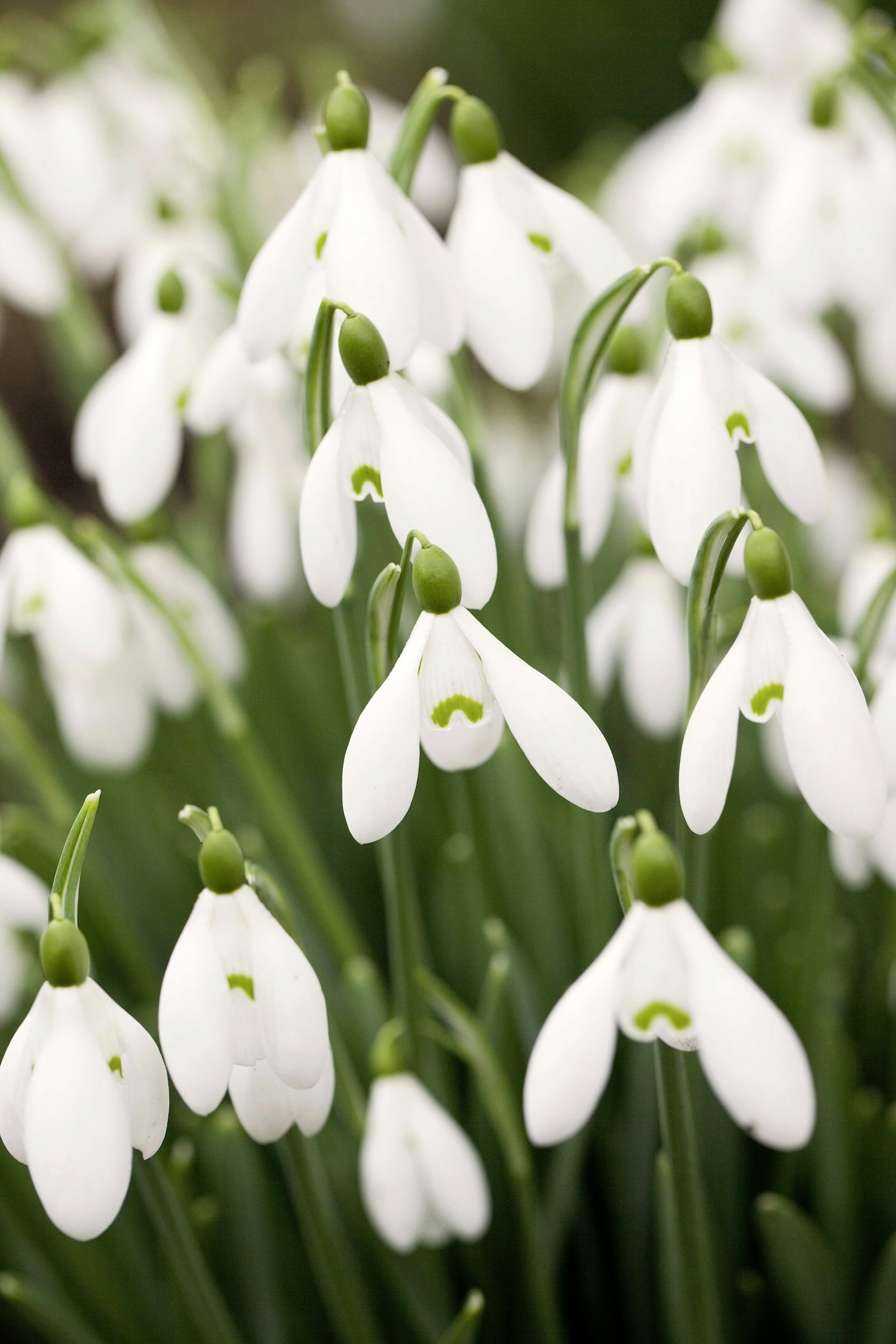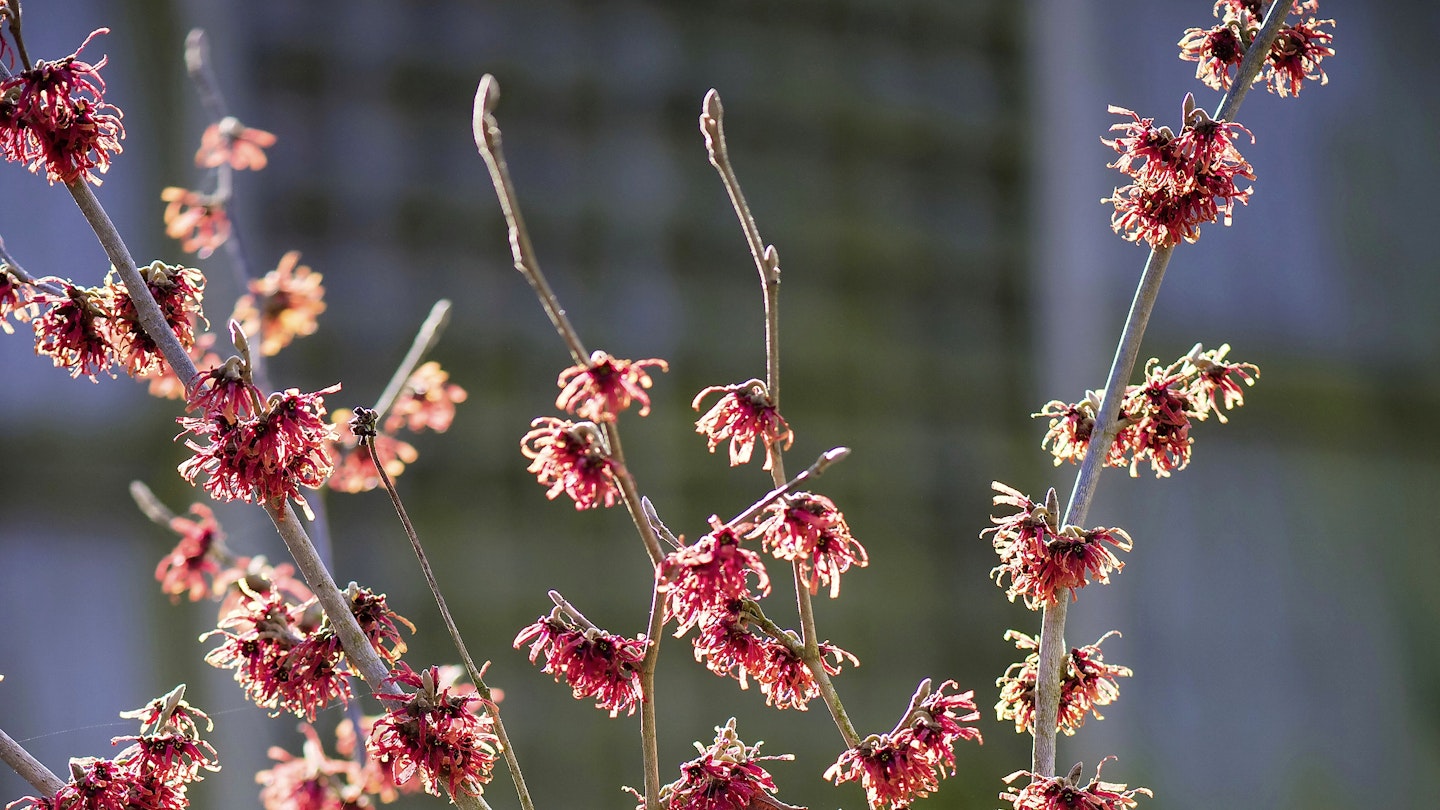Smells define the seasons and nowhere more so than in the garden: the lingering smoke of an autumn bonfire, that earthy aroma when you open the greenhouse door on a spring morning, the rich smell of freshly cut grass on a summer’s day and the scent of rain on dry ground after a long spell of drought.
For much of the warmer months, gardeners are spoiled for choice when it comes to fragrant flowers, too.
Whether it’s the fruity tones emitted by a border of roses or the intense fragrance of lilies, it’s easy to create a feast for the senses.
But as we move into autumn and our gardens die down for winter, scent can be notably absent.
That’s why it’s important to choose the right plants for an uplifting burst of winter and early-spring fragrance. On a freezing day, a waft of intense perfume, even from a tiny flower, is enough to lift our spirits.
Don’t agonise over blending scented winter plants into borders at the end of the garden. Instead, grow them where you’ll be able to appreciate their fragrance – by the back door, outside the kitchen window and alongside paths you use regularly.
If the growing conditions here are less than ideal, why not grow winter plants in large containers filled with John Innes No 2 compost? A burst of fragrance can be just the ticket on a bleak January day.
Why do winter-flowering plants smell so sweet?
Plants that bloom in winter tend to bear small but highly perfumed flowers – a stark contrast to big, colourful, fragrant flowers that lure bees for pollination during summer.
Chief horticulturist at the Royal Horticultural Society, Guy Barter, explains: “Bees are not active in winter, so some winter-flowering plants have found an ecological niche by looking out for other pollinators, such as flies.
"They do this by chucking out immense quantities of scent. Flowers can be small because pollinators will be attracted by scent in winter, and not by colour, as in summer.
"There won’t be many pollinators about and scent can be ineffective if cold, so it must be potent to draw them in.”
Winter flowers are also small because plants don’t have to put on such a dramatic display. With few plants in bloom during the cold months, there’s less competition to attract pollinators.
Fragrant favourites

Galanthus ‘S.Arnott’: Heading to a nursery to buy scented plants? Chances are that snowdrops won’t be on your shopping list. But this one should be because its large, nodding flowers emit a fabulous sweet honey scent in February and March, with fragrance intensifying on milder days. Grow in part-shade for best results. Plant bulbs now.
Iris unguicularis ‘Mary Barnard’: Some iris are at their finest in the depths of winter. Take this evergreen perennial that puts on a display of fragrant, intense violet flowers from mid-November to spring. It’s a good plant for problem areas, thriving at the base of walls where ground is hard. Plants need full sun, good drainage and alkaline or neutral soil. Plant bulbs now.
Hamamelis intermedia ‘Diane’: The perfume of witch hazel can stop you in your tracks at a time when everything else is barren. Don’t assume all varieties bear spidery, yellow flowers: ‘Diane’ is a deciduous shrub, regarded as one of the best red-flowering, sweet-scented witch hazels in mid to late-winter. And it puts on a dramatic foliage show every autumn with fabulous shades of reds and yellows. Plant now in a sheltered position.
Helleborus odorus: The Lenten rose flowers in the darkest days of winter but it has the stamina to carry on into early spring. H. odorus is a green-flowering hellebore and while there are varieties with more colourful, detailed flowers, its blooms can be sweetly scented – although fragrance isn’t always evident.
Erica veitchii ‘Exeter’: Even if we have a mild winter, you’ll be guaranteed a snow-like effect when this heather becomes smothered in plumes of fragrant, white, bell-shaped flowers during late winter. The icy white blooms bear a stark contrast to its bright green foliage and, as you’d expect from a heather, it prefers acidic soil, although it will tolerate putting its roots down into neutral or alkaline soil if planted in a sunny position with good drainage.
Viburnum bodnantense ‘Charles Lamont’: Visit garden centres and ‘Dawn’ will often be the recommended viburnum for winter fragrance. But if you fancy a break from the norm, ‘Charles Lamont’ is a winter gem. Its bright pink flowers are heavily scented and borne on bare stems between November and spring.
Sarcococca hookeriana ‘Winter Gem’: The fragrance of this hardy hybrid is likely to hit you before you’ve even caught sight of its spectacular white flowers, which emerge from red buds and are followed by glossy red berries that blacken with age. This is a stunning form of sweet box that’s especially useful because it’ll thrive in shade and fill the cold winter air with its jasmine-like scent.
Lonicera fragrantissima: The clue’s in the name: the creamy-white, semi-double flowers of winter honeysuckle are sweetly scented, and at their prime between January and March, when fragrant flowers can be few and far between in the garden. Red berries can follow flowers. Plants enjoy rich, well-drained soil in sun or partial shade.
Crocus sieberi ‘Bowles’s White’: Don’t overlook bulbs in the quest for winter fragrance. The icy-white, yellow-throated flowers of ‘Bowles’s White’ come with a bonus when they arrive in late winter or early spring: they’re scented. This crocus isn’t fussy about soil type provided it’s given a sunny position.
